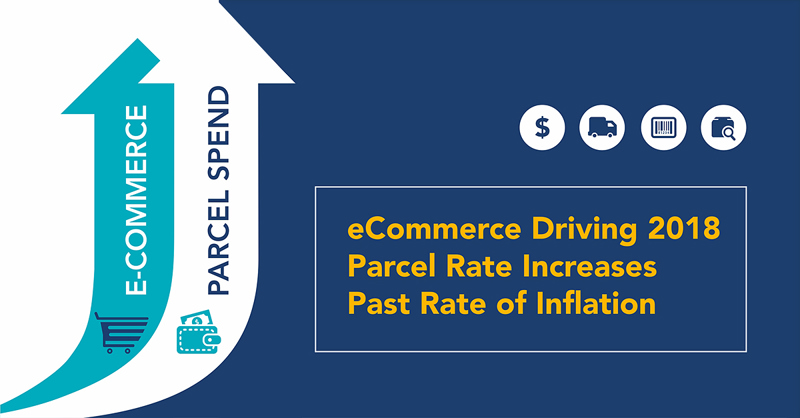It’s that time of year again when parcel carriers make General Rate Increases (GRI) announcements. And again, rates will increase at double the inflation rate, which in the U.S. is running at around 2.2%. Both UPS and FedEx announced ‘average’ general rate increases of 4.9%, while the USPS increased rates by 3.9%.
But, as most shippers understand by now, GRIs represent average increases, which are not necessarily indicative of what shippers will actually pay. The impact of the rate changes will differ based on service, zones, weights, volumes, and other details of the individual company’s contracts (like surcharges). So to say everyone will realize a flat 4.9% increase in costs is not accurate, and may even be optimistic.
What we can predict, however, is that eCommerce businesses or those moving a lot of oversized items will be most impacted by the increases.
Here’s a breakdown of the most significant changes for each carrier.
UPS
The following changes in UPS rates will be effective December 24, 2017:
- UPS Ground, UPS Air and International services will increase net 4.9%. UPS Air Freight between the U.S., Canada, and Puerto Rico will increase by the same amount.
- The Large Package Surcharge will be applicable on any domestic package over 96 inches in length or a length plus girth more than 130 inches.
- The DIM weight divisor will be 139 for all U.S. Domestic packages less than or equal to one cubic foot.
- UPS Freight rates will increase by an average net of 4.9%.
The company announced additional rate changes that will take effect on July 8, 2018:
- The Large Package Surcharge for any U.S. Domestic package will be $90 for a residential delivery.
- The Additional Handling Surcharge will be $19 for any domestic package over 70 lbs. in actual weight.
FedEx
Here is a summary of the price increases, effective on January 1, 2018:
- FedEx Express, Ground, Home Delivery and Freight will increase by an average of 4.9%. This includes shipments within the U.S., and between the contiguous U.S. and Canada.
- FedEx One Rate will go up 3.5%.
On January 22, 2018, the following changes will take place:
- A Third-Party Billing Surcharge will apply to FedEx Express and FedEx Ground shipments that are billed to a third party.
- Surcharge rules for shipments oversized or needing additional handling will change.
- FedEx SmartPost will apply dimensional weight pricing.
- For FedEx Freight, an Over Length Surcharge of $80 will be applied to shipments greater than 8 feet and less than 12 feet.
USPS
- Priority Mail rates will increase 3.9%.
- Commercial Plus rates will increase 6.1%, with an average discount of 12% off Retail prices.
- Retail prices will increase an average of 0.8%.
This information is helpful to give shippers a sense of how the GRIs will impact their costs in 2018, but every company’s analysis should go deeper. Modeling costs based on your actual rates, is the best way to understand the impact on your business. If you can’t do it yourself, find a consultant who can.
GRIs always make rate management and carrier selection more difficult as well. UPS and FedEx rates become LESS similar with every new announcement. From an operating perspective, it’s paramount to have the ability to select carriers and service levels that are optimized for every shipment. This is not something that can be managed manually and requires the right decision-making controls and tools in place.
In eCommerce, demand is exceeding supply, which is why carrier rate increases have been exceeding inflation rates. It’s likely that all carriers will continue to find ways to improve margins and maximize eCommerce capacity. This means companies should be prepared for similar increases beyond 2018 as eCommerce continues to grow. With Amazon nipping at everyone’s heels, every eCommerce business needs to implement cost-effective strategies to offset the increasing cost of “free” shipping.
